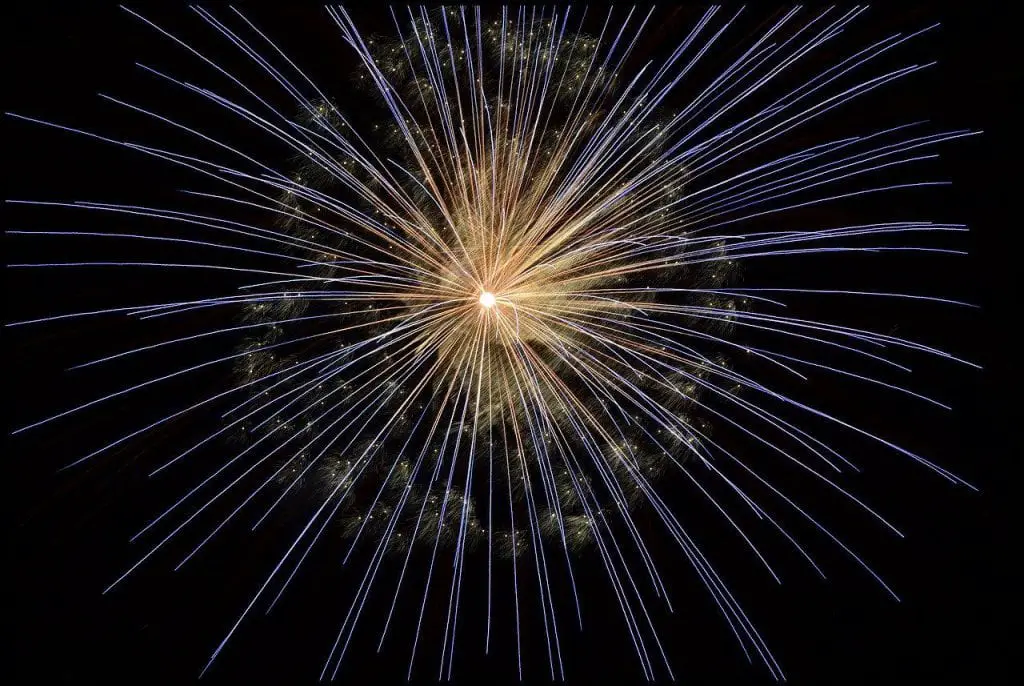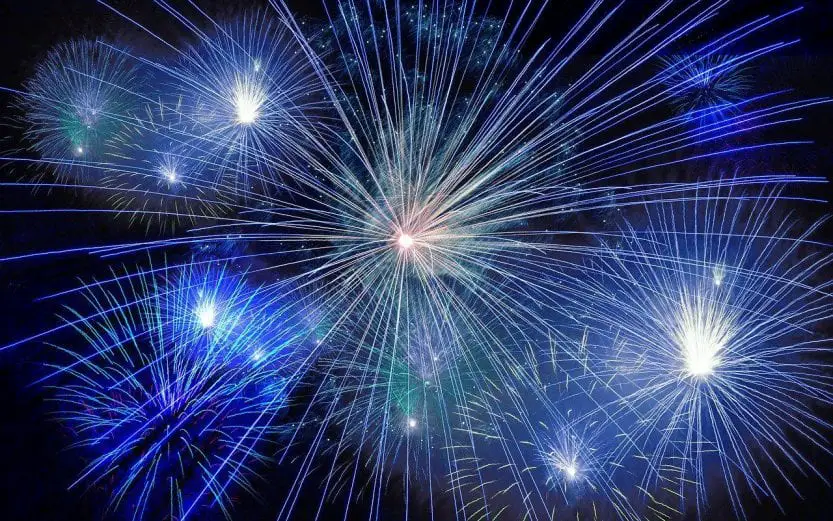For centuries, fireworks have been used to symbolize happiness and important festive occasions. They flood the night sky with brilliant hues of emerald, scarlet and ivory. However, if you want to really differentiate between a top rate firework display and a cut-rate carnival slideshow, look for bright blue fireworks. Not purple, not mauve put true blue fireworks…
Since their inception, pyrotechnicians have tried countless times to get that elusive blue firework. Very few have come close to it. In most of the displays, the color is still absent and other soft colors are incorporated to compensate for its absence. This is because compared to red, green, and white, getting the blue color in fireworks is very difficult. Let us further discuss the difficulties that arise when developing a blue firework.
History of Fireworks
It was in 200 B.C. when fireworks were invented by the Chinese quite serendipitously. However, it was over a thousand years later that they were properly developed by Chinese alchemists. Early fireworks were basically bright and noisy explosions used to scare the evil spirits away unlike their controlled versions we witness today. It was after another millennium that Italians discovered how to add color to the concoction and started introducing several elements into the pyrotechnic mix. For example, adding strontium produces a red flame and sodium is used for yellow. However, in their fascination of blue objects, they tried getting copper for blue color but were rarely successful. The different wavelengths of color can be seen due to the little changes in the chemical mix. The right mixture of chemicals when lighted has enough energy to excite the electrons to give the desired colors of light.

Reasons for Blue being Rare
Blue objects have held and still hold human fascination. In fact, it is considered to be the favorite color of the maximum population. However, weirdly, even with all the advancements, blue fireworks still vex even the most seasoned pyrotechnician. Let us take a look at the quirky chemistry that plays a major role in the problem.
· Among all the colors, blue was discovered very late and was one of the hardest colors to obtain. It was once more expensive than gold itself. However, due to a chemical accident, blue paint was discovered and started getting used in art. Even though the color was used liberally in blue objects thereafter, it has mystified the fireworks experts all around the world.
· In order to get the right distinctive colors, there are two main components that are used and packed tightly. This includes an oxidizer that is an oxygen-rich chemical and a fuel source like charcoal or sulfur that can burn. Not just any gunpowder can be used in the same unless you want a standard ball of fire that would be highly unstable.
· The chemistry behind producing the blue hue in the sky is a combination that very few have managed to get. In order to get the correct combination, the chemical species called the emitter that produces the blue light in the sky is a fragile compound gas. . When heated to a high temperature, it emits blue light.
· Copper when heated to the right high temperature emits blue light. However, if the temperature gets too high, it washes off the light and stops emitting. If it gets too low, there is no intensity and you do not get the right blue color.
· The colors red, green and orange are easy colors to produce when compared to blue. In recent years, with the advancements in chemistry in recent years, metal fuels have started been using raising the flame temperature. This in turn makes the color brighter. However, this is not the case in blue color as higher temperature means fading out of the color.
· It has been a thousand years since the Chinese invented fireworks. But to this day, no one has been able to find the right combination or the perfect chemical composition to produce that bright blue up in the sky. Blue objects may have become common but blue fireworks are still very rare.
· However, very few people notice this difference. It is only noticed by those who are really involved in the fireworks that can notice the difference. This is because the patterns produced by other colors and the effects showcased by them in the sky more than compensate for the lack of the Blue. The whole firework timing is so overwhelming that very few people notice the difference.
· Another problem that comes up is that the color of the evening sky is also blue. This makes most shades of blues go unnoticed in the sky in contrast to the background. However, if you try to brighten them up, they become more washed out. It is only when the optimum balance of copper and several other chemicals are used in a flame that produces a bright blue color flame in the display.
Conclusion
Fireworks are the go-to choice for people to signify great festivities and often become synonymous with patriotism in some countries. Not many people understand the chemistry behind the same. Several people in the pyrotechnic research and development would agree with the fact that just like blue objects in the bygone era, blue pyrotechnics the ‘expensive’ one’s today. A normal firework shell can hold up to 8 colors at once. Every color represents a different mix of chemical compounds. Strontium creates reds, titanium or aluminum creates the whites, golds, or yellow hues are produced by sulfur and calcium compounds create oranges. Technicians often use different combinations and recipes of oxidizers to get a different set of colors in each firework display.
Now that you know the process behind the same, next time when you see the blue color dots in the sky while watching a firework display, you are sure to appreciate the effort behind it. Remember, this light is not just light shooting in the sky but it really is the pattern formed by the excited electrons releasing energy in the form of blue light.




